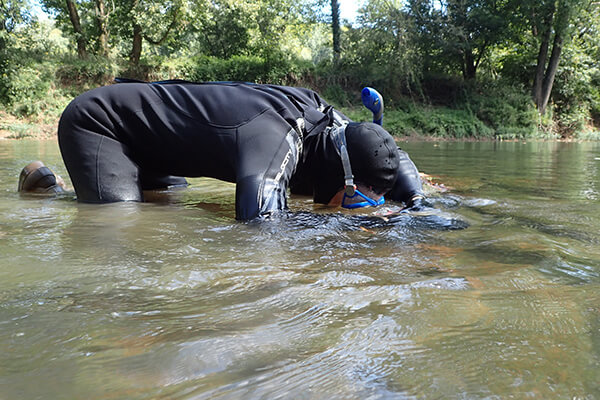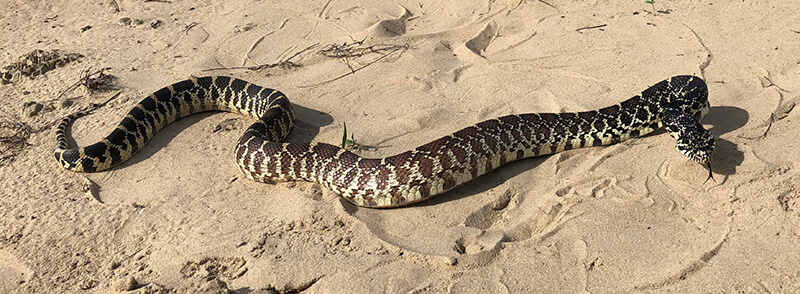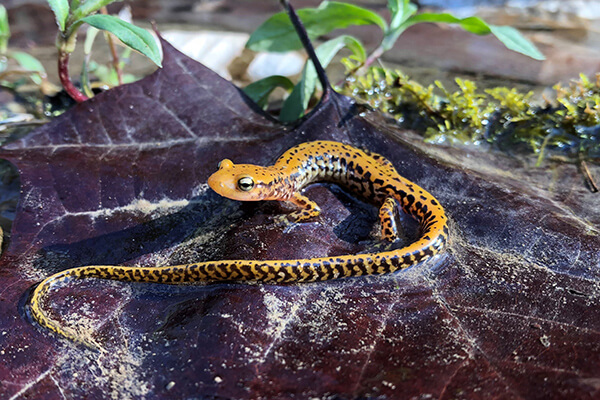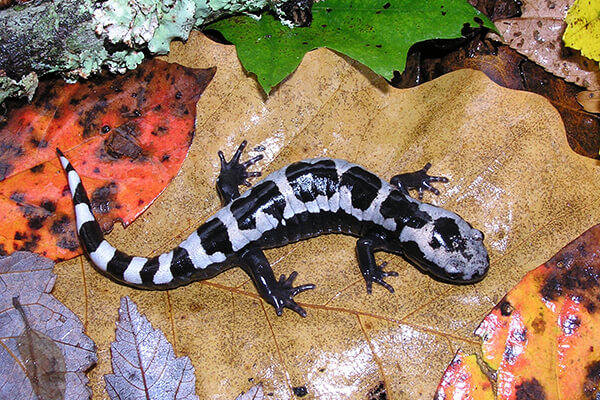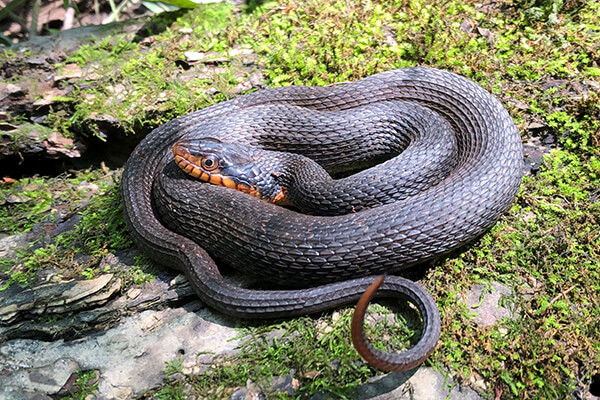Select image to enlarge and view caption.
Amphibians and Reptiles
Indiana’s amphibians and reptiles, collectively called “herpetofauna,” occupy nearly every habitat in the state, including lakes, rivers, wetlands, forests, prairies, glades, caves, and dunes. Some species may also be found in agricultural, residential, and urban areas. Many of these curious animals live secretive lives in underground hideaways or simply blend in with their environment. Others may be observed basking on logs, climbing trees, or—as with our state’s frogs—heard calling during their spring and summer breeding seasons.
Indiana is home to 41 species of amphibians (frogs and salamanders) and 54 species of reptiles (turtles, lizards, and snakes). Of these 95 species, about one-third are listed as a Species of Greatest Conservation Need (SGCN) by the Indiana DNR.
Habitat management and conservation programs for these species are supported through the generosity of Hoosiers who donate to the Indiana Nongame Wildlife Fund. No state tax dollars are used to manage these species. Consider donating today.
Monitoring Amphibian and Reptile Populations
Indiana DNR herpetologists conduct research and monitoring to better understand the status and distribution of the state’s amphibians and reptiles. Species currently being studied and monitored include crawfish frogs, boreal chorus frogs, hellbenders, green salamanders, and Kirtland’s snakes. The DNR Herpetology Program is collaborating with several academic and non-profit partners to study and recover Indiana’s amphibians and reptiles. Read more about these projects in the project descriptions below.
- Kirtland’s Snake Population Studies
Kirtland’s snakes are a secretive, state endangered species that spend much of their lives underground. DNR herpetologists have teamed up with the Sycamore Land Trust to survey for the species in parts of south-central Indiana. Kirtland’s snakes have been located at several new sites in recent years, including areas that were formerly under agricultural production. This year, researchers are sampling for Kirtland’s snakes at newly constructed wetlands to determine how quickly the snakes will colonize newly created habitat.
- Crawfish Frog Recovery at Angel Mounds
In 2024, DNR herpetologists collected crawfish frog egg masses from an existing population in southwest Indiana and relocated them to Angel Mounds State Historic Site in Evansville. A large crawfish frog population historically existed at Angel Mounds, but it mysteriously died out during the 1980s for reasons that are not well understood. Suitable habitat remains at there, and biologists are attempting to reestablish the frog population at the historic state property. Additional egg mass translocations are planned for 2025 and 2026.
- Boreal Chorus Frog Status Surveys
Boreal chorus frogs are one of Indiana’s smallest and least understood frog species. Boreal chorus frogs were not historically known from Indiana until populations were discovered in the northwest corner of the state during the early 2000’s. These frogs closely resemble the more common Western chorus frog, making it difficult to determine where the two species occur. DNR herpetologists are working with a researcher from Queens University in Ontario, Canada, to examine the distribution of Indiana’s chorus frogs using genetic samples collected from frogs. Data from this study will allow researchers to determine where boreal chorus frogs occur—an important first step in managing their populations. Boreal chorus frogs are currently listed as a species of special concern.
- Hellbender Recovery
For nearly two decades, the DNR has been working with researchers at Purdue University to study and recover Indiana’s hellbender population. These giant salamanders are Indiana’s most imperiled amphibian, but a collaboration with Purdue, several partnering zoos, and other conservation organizations is turning the tide on the species’ declines. Since 2017, more than 500 young hellbenders have been released into the Blue River, which contains Indiana’s last known hellbender population. The DNR is currently working with Purdue to monitor hellbenders at one of the release sites. In 2023, DNR and Purdue located a young larval hellbender, providing confirmation of natural reproduction in the river. This discovery was a significant benchmark for recovering Indiana’s hellbenders and will be followed by additional surveys during June and July of 2024. Hellbender releases are scheduled to continue during the coming years.

